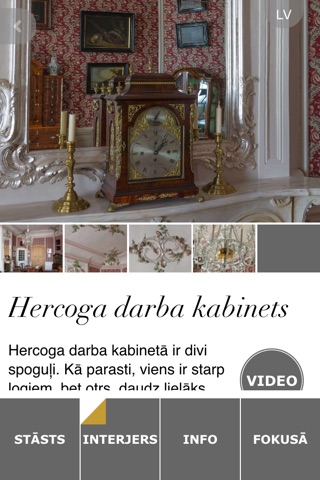
Rundale Palace app for iPhone and iPad
Developer: RIX Technologies AS
First release : 28 May 2015
App size: 15.21 Mb
Rundale Palace is an application of Rundale Palace Museum.
The 24th of May 2014, the anniversary of laying the cornerstone of Rundale Palace, also marks 50 years since the beginning of the palaces rebirth, which started in 1964.
Rundale Palace was designed by the Russian court architect Francesco Bartolomeo Rastrelli for Ernst Johann Biron, favourite of the Empress of Russia Anna Ioannovna, and construction works began in 1736. Back then nobody could have imagined the strange fate of this building, full of unexpected twists and rapid changes of pace. As if by magic, it was built in two years, and interior works were almost finished within another two years; however, following Birons arrest in 1740, the palace lay dormant for two decades until works resumed under Rastrellis guidance in 1764. The palace was finally finished in 1768. The splendour of the Dukes court was followed by a long period of slumber from 1795, and the 20th Century brought devastation and ruin.
The restoration of the palace meant more than just restoring the palaces architecture, the paintings of Italian painters Francesco Martini and Carlo Zucchi, and the stucco figures of Berlinese sculptor Johann Michael Graff. It was also necessary to return content to the empty rooms and to fill them again with paintings, furniture, porcelain, clocks, and chandeliers. We will never know just how the palaces rooms looked after the interior works were completed in 1768, especially due to the fact that the fast-paced court life of the day did not allow for one particular and unchanging interior.
A new version of the possible historic interior has been created, based on information about Duke Birons art collections and current understanding of 18th Century taste; it is a stylised and harmonised image of the Dukes summer residence.
The long process of rebirth of the historic environment also provided an imaginary look through the looking glass, attempting to summon long-gone images, bringing visions of the past closer and making them more credible. Almost all of the state rooms in the palace have mirrors, casting a reverse view of reality. Maybe this is the right approach: to look at each room as if through a looking glass, which adds a remote and slightly magical form of existence to all things.



